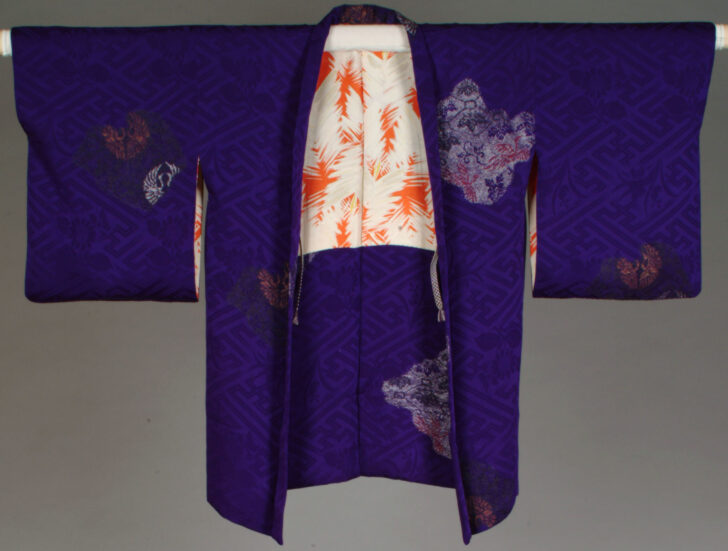Purple haori with supplementary weft brocade woven bird-and-flowers designs
Japanese

Description
Gallery Rotation Winter 2013
Haori
Japan, Showa period (1926–1989)
circa 1930–39
Purple silk damask with woven designs
Gift of Howard and Patricia Yamaguchi, 2005/1.355
In the Edo period (1615–1868) the haori was a type of formal attire for men, but in the nineteenth century it was adopted by female entertainers in the capital, Edo (modern-day Tokyo), as a cloak for outdoor wear in mild weather. Later the haori became the standard outerwear for women who dress in kimono outside the home. This haori is damask silk dyed a beautiful purple. The fabric has an intricate woven design of geometric and flower patterns that is visible in certain light. Phoenix, cranes, paulownia, and chrysanthemum designs are woven onto the damask with silk and metallic threads, adding an elegant sheen to the surface of the haori.
Subject Matter:
The haori was originally part of a man’s formal attire, but in the nineteenth century, female entertainers in Edo (modern Tokyo) adopted it as a cloak for outdoor wear in mild weather.
Physical Description:
Purple silk damask (rinzu) in T-paper pattern (sayagata), bokashi dyed so that the shoulders are a darker purple than the lower half of the haori. Woven designs of phoenixes, paulownia, cranes, chysanthemums, etc., incorporate metallic threads. Lining is orange and white silk. There are purple and white kumihimo (a kind of cord) with tassels.
Usage Rights:
If you are interested in using an image for a publication, please visit https://umma.umich.edu/request-image/ for more information and to fill out the online Image Rights and Reproductions Request Form.